Highlights
Main research area centers around edge intelligence and Light-weight implementation of machine learning,
- Human-to-machine Interactions
- Perceptual Tactile Sensation
- Prototype of Light-weight Haptic Augmented Interface
- Thermal Imaging-based Crowd Screening Framework
- Edge Intelligence
Human-to-Machine Interactions
In this experiment, we present an end-to-end synchronous system to establish near real-time maneuvering. 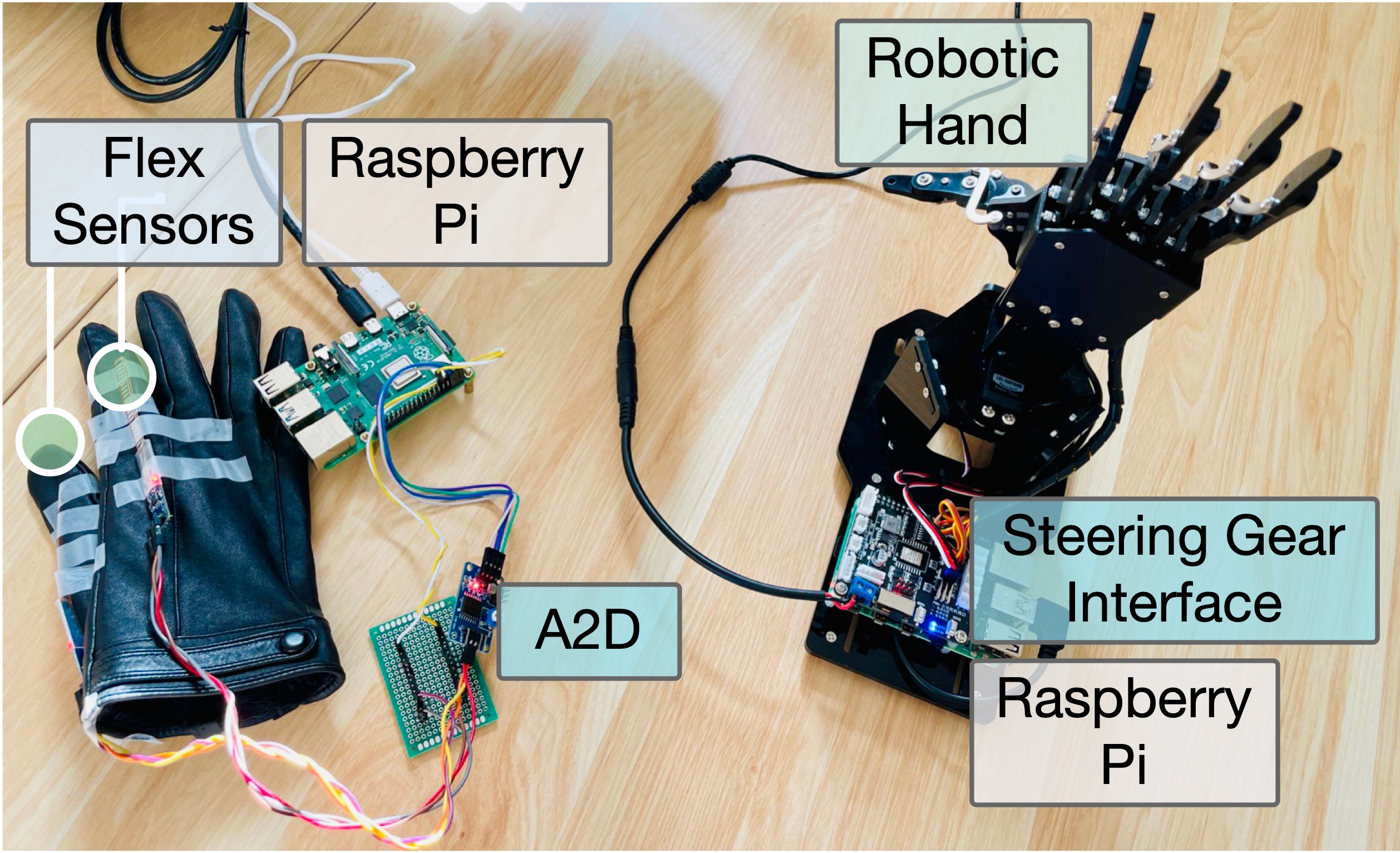 In particular, we aim to apply edge intelligence to determine the amount of data required for mimicking the human’s hand movement before wireless transmission to the controlled domain. This demo “TINGLE: Pushing Edge Intelligence in Synchronization and Useful Data Transfer for Human-Robotic Arm Interactions” has been accepted in IEEE INFOCOM 2022.
In particular, we aim to apply edge intelligence to determine the amount of data required for mimicking the human’s hand movement before wireless transmission to the controlled domain. This demo “TINGLE: Pushing Edge Intelligence in Synchronization and Useful Data Transfer for Human-Robotic Arm Interactions” has been accepted in IEEE INFOCOM 2022.
Perceptual Tactile Sensation
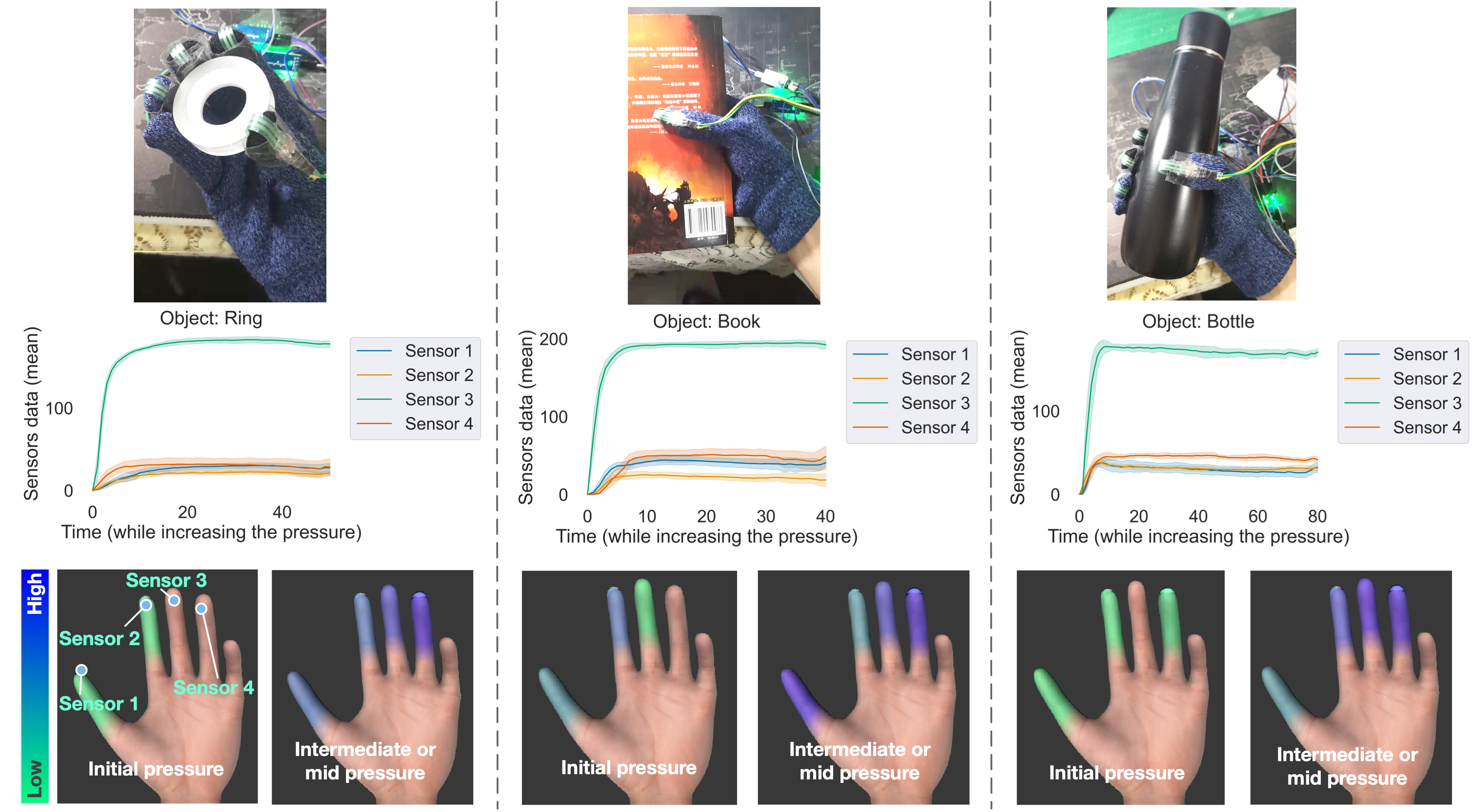
In this demonstration, we aim to address the following: “how can we reflect the personalized sensation in a virtual domain for a haptic-tactile interface?” Our future work includes (a) lightweight rendering with shader graph and (b) standalone interface with minimal dependency on additional hardware and software resources. A 2-page demonstration has been accepted in ACM SenSys 2022 Demo.
Prototype of Light-weight Haptic Augmented Interface


In this prototype, we collect tactile data from pressure sensors attached to the human hand and design a classifier to determine the objects that an individual holds or grasps. Finally, we have implemented the proposed system on Raspberry Pi and demonstrated a personalized classification while rendering the haptic feedback in a virtual perception. We have presented this demo in ACM MobiCom 2022.
Thermal Imaging-based Crowd Screening Framework
 In this demonstration, we present an end-to-end assistive method for human body temperature
In this demonstration, we present an end-to-end assistive method for human body temperature 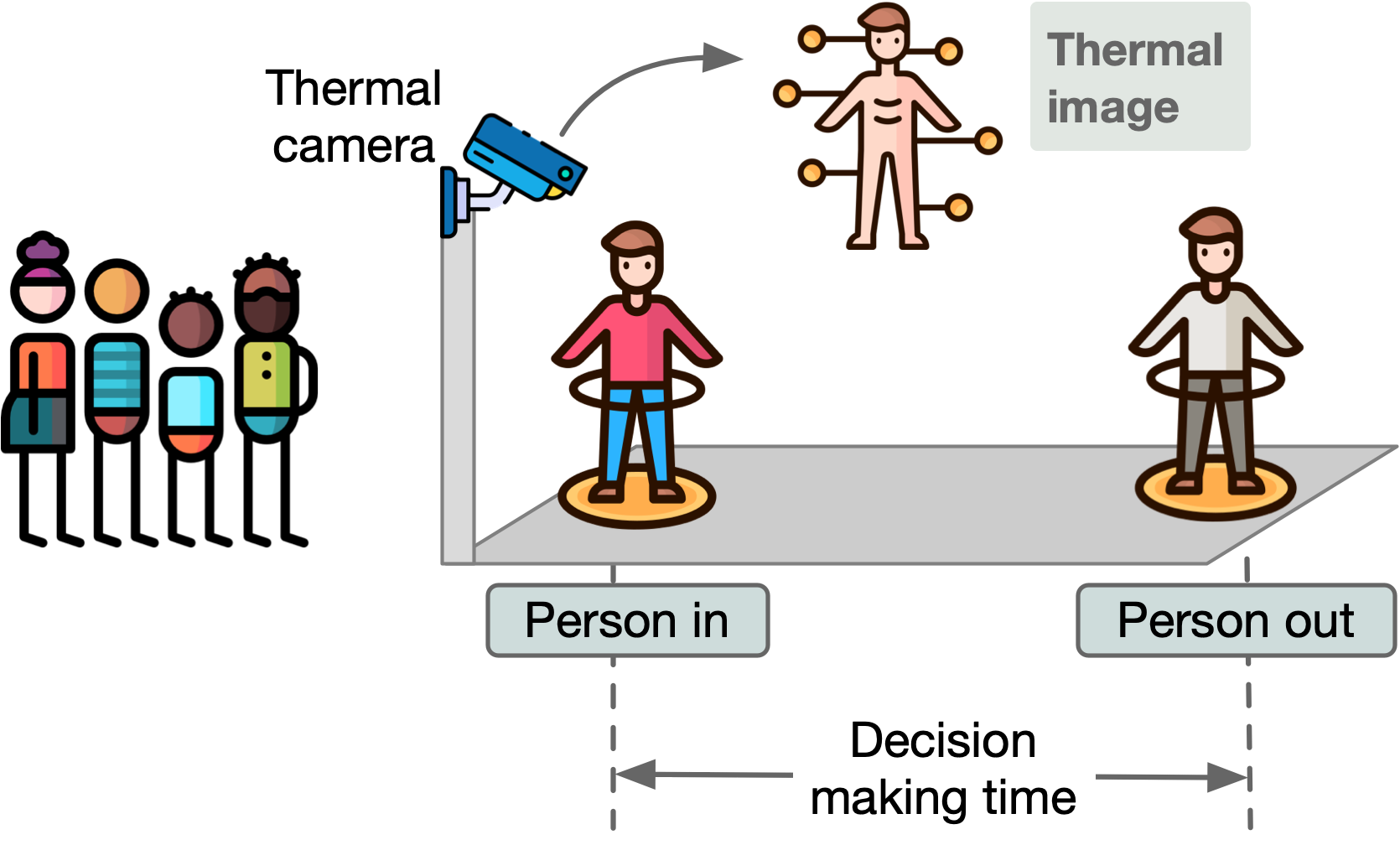 screening system starting from collecting raw data using a thermal camera to identify the suspected individual for combating communicable infectious diseases. We deploy a lightweight MobileNet v2 in resource-constrained Raspberry Pi 4B to detect the human’s head and body from the thermal image and use a classifier to determine the temperature from the raw temperature data. The experiments show that although the detection accuracy is not very high, we can reduce the bottleneck from screening time and reduce the exposure for the individuals
screening system starting from collecting raw data using a thermal camera to identify the suspected individual for combating communicable infectious diseases. We deploy a lightweight MobileNet v2 in resource-constrained Raspberry Pi 4B to detect the human’s head and body from the thermal image and use a classifier to determine the temperature from the raw temperature data. The experiments show that although the detection accuracy is not very high, we can reduce the bottleneck from screening time and reduce the exposure for the individuals  because of the reduced bottleneck.
because of the reduced bottleneck.
Although the detection accuracy is not very high, we can easily obtain the raw value of the temperature and filter out the background or surface temperature. From the preliminary results, we argue that instead of mass screening with a high-cost IR camera/thermometer at the screening centers. As a part of future work, we aim to design a recommender-based system using collaborative filtering that combines outdoor/surface temperature with the detected human temperature. One 2-page demonstration has been presented in ACM MobiCom 2021 and a full paper has been accepted in IEEE Internet of Things Journal.
Glimpse of Previous Work
Edge Computing
Intelligent Edge Computing: Security and Privacy Challenges
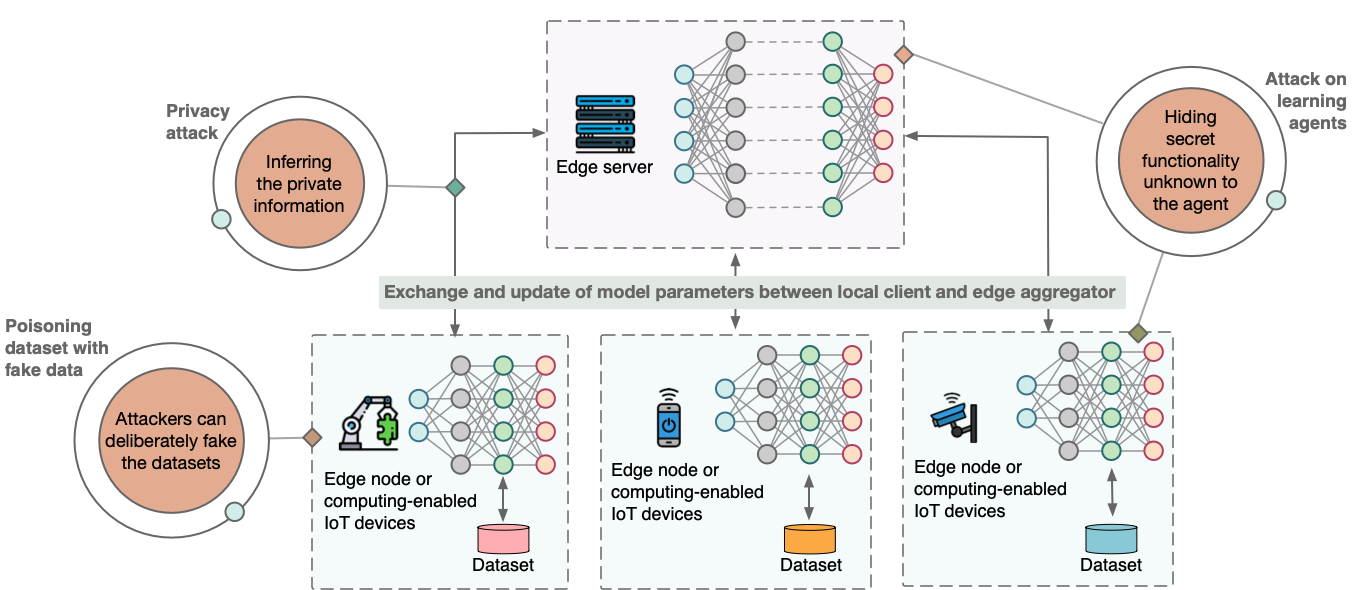
[Accepted in IEEE Communications Magazine]
Fog/Edge Computing
Fog computing emerges as an attractive solution to meet low-latency,  location aware-ness, geographic distribution, and high mobility requirements of Internet of Things (IoT). Basically, fog computing paradigm extends the storage, networking, and com- puting facilities of the traditional cloud computing towards the edge of the networks, suiting services that require low latency, local processing, and data filtration. Compared to traditional cloud computing, fog computing can support delay-sensitive service requests from End-Users (EUs) with reduced energy consumption and low traffic congestion. Basically, fog networks are viewed as offloading to core computation and storage.
location aware-ness, geographic distribution, and high mobility requirements of Internet of Things (IoT). Basically, fog computing paradigm extends the storage, networking, and com- puting facilities of the traditional cloud computing towards the edge of the networks, suiting services that require low latency, local processing, and data filtration. Compared to traditional cloud computing, fog computing can support delay-sensitive service requests from End-Users (EUs) with reduced energy consumption and low traffic congestion. Basically, fog networks are viewed as offloading to core computation and storage.
Fog computing is defined by the OpenFog Consortium as “a system-level horizontal architecture that distributes resources and services of computing, storage, control and networking anywhere along the continuum from cloud to Things.”
Basically, fog computing has the following characteristics
- low latency and location awareness,
- supports geographic distribution,
- end device mobility,
- capacity of processing high number of nodes,
- wireless access,
- real-time applications, and
- heterogeneity
Classical Papers on Fog Computing
- F. Bonomi, R. Milito, J. Zhu, and S. Addepalli, “Fog computing and its role in the Internet of Things,” in Proc. 1st Ed. MCC Workshop Mobile Cloud Comput. (MCC), Helsinki, Finland, Feb 2012, pp. 13–16.
- M. Aazam and E. N. Huh, “Fog Computing: The Cloud-IoT/IoE middleware paradigm,” IEEE Potentials, vol. 35, no. 3, pp. 40–44, May 2016.
- M. Chiang and T. Zhang, “Fog and IoT: An overview of research opportunities,” IEEE Internet of Things Journal, pp. 1–11, 2016.
Tactile Internet
Leveraging Intelligent Computation Offloading with Fog/Edge Computing for Tactile Internet: Advantages and Limitations
With the recent advancement in wireless communication and networks, we are at the doorstep of the Tactile Internet. The Tactile Internet aims to enable the skill delivery and thereafter democratize the specialized skills  for many emerging applications (e.g., remote medical, industrial machinery, remote robotics, autonomous driving). In this article, we start with the motivation of applying intelligent edge computing for computation offloading in the Tactile Internet. Afterward, we outline the main research challenges to leverage edge intelligence at the master, network, and controlled domain of the Tactile Internet. The key research challenges in the Tactile Internet lie in its stringent requirements such as ultra-low latency, ultra-high reliability, and almost zero service outage. This paper has been accepted in IEEE Network
for many emerging applications (e.g., remote medical, industrial machinery, remote robotics, autonomous driving). In this article, we start with the motivation of applying intelligent edge computing for computation offloading in the Tactile Internet. Afterward, we outline the main research challenges to leverage edge intelligence at the master, network, and controlled domain of the Tactile Internet. The key research challenges in the Tactile Internet lie in its stringent requirements such as ultra-low latency, ultra-high reliability, and almost zero service outage. This paper has been accepted in IEEE Network
An Introduction on Tactile Internet
We are witnessing the unprecedented growth of mobile devices with
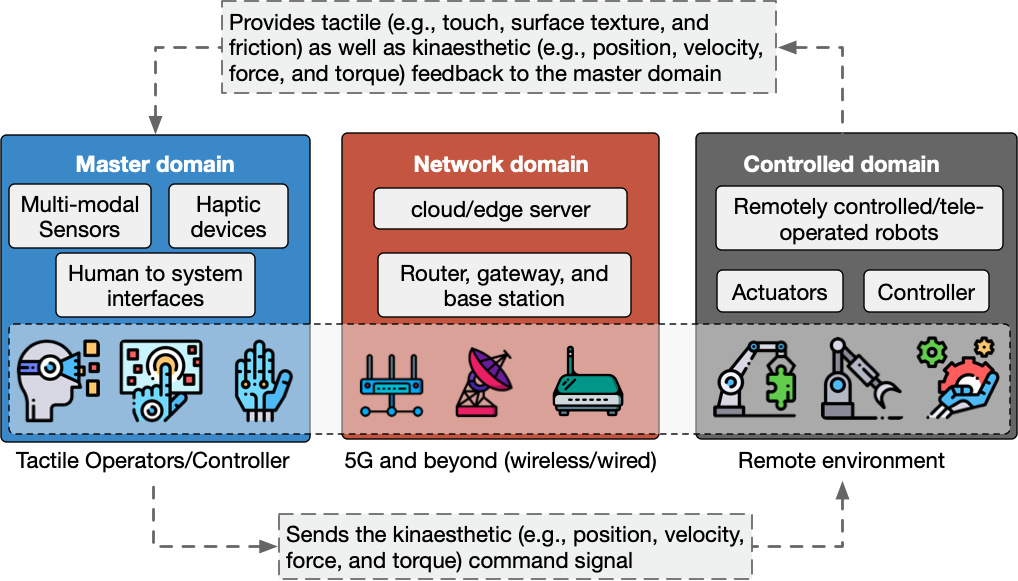 seamless connectivity and high-speed mobile broadband Internet in almost every aspect of the digitalized world. In the coming years, we envision the next form of cyber-physical systems with an advanced and sophisticated tele-operation, termed as Tactile Internet.
seamless connectivity and high-speed mobile broadband Internet in almost every aspect of the digitalized world. In the coming years, we envision the next form of cyber-physical systems with an advanced and sophisticated tele-operation, termed as Tactile Internet.
Before we discuss what Tactile Internet is, let us look at the ongoing research efforts in today’s communication and networking technologies. We are now familiar with ultra-reliable and low-latency, massive connectivity, and machine-type communications in 5G communication systems. Tactile Internet will take a step forward to perform nearly real-time tele-operation and manipulation of remote physical or virtual objects while delivering human and machine skills. Compared to the content-centric mobile broadband Internet services, Tactile Internet aims to provide audio-visual, and haptic interactions for real-time steering and control of these remote physical or virtual objects. Some of the promising examples of Tactile Internet ranges from remote surgery, remote automation, remote driving, to remote learning and education. In August 2014, the International Telecommunication Union (ITU)-Technology Watch Report already sketched the opportunities for emerging technology in business and societies with the emergence of Tactile Internet – which is envisioned as the next wave of innovation.
A Post on Tactile Internet

[Read IoT Newsletter, March 2019]
Classical Papers on Tactile Internet
- G. P. Fettweis, “The tactile Internet: Applications and challenges,” IEEE Vehi. Technol. Mag., vol. 9, no. 1, pp. 64–70, Mar. 2014.
- IEEE P1918 Tactile Internet Emerging Technologies Subcommittee [Link]
- M. Simsek, A. Aijaz, M. Dohler, J. Sachs, and G. Fettweis, “5G-enabled Tactile Internet,” IEEE J. Select. Areas Commun., vol. 34, no. 3, pp. 460–473, Mar. 2016.
- S. M. A. Oteafy and H. S. Hassanein, “Leveraging Tactile Internet Cognizance and Operation via IoT and Edge Technologies,” in Proceedings of the IEEE, vol. 107, no. 2, pp. 364–375, Feb. 2019.